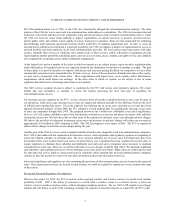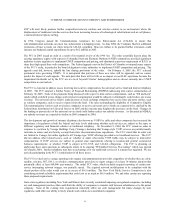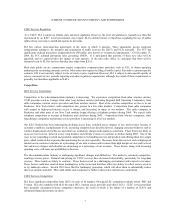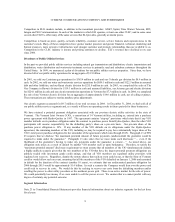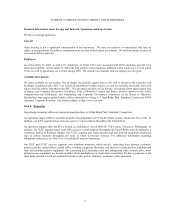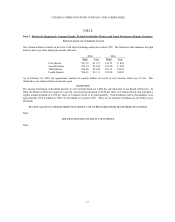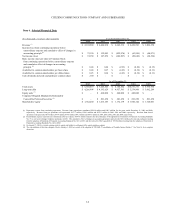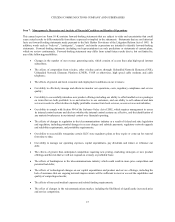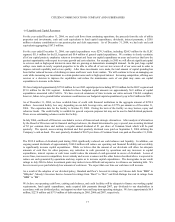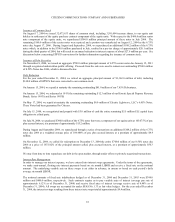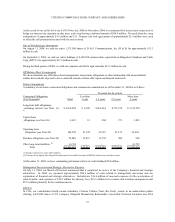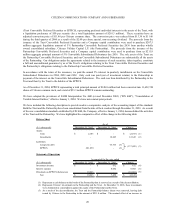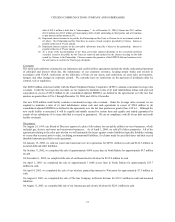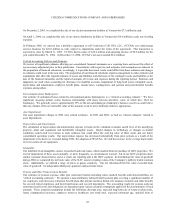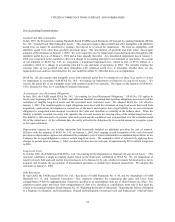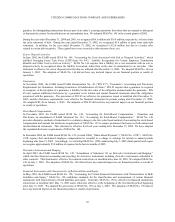Frontier Communications 2004 Annual Report Download - page 17
Download and view the complete annual report
Please find page 17 of the 2004 Frontier Communications annual report below. You can navigate through the pages in the report by either clicking on the pages listed below, or by using the keyword search tool below to find specific information within the annual report.
CITIZENS COMMUNICATIONS COMPANY AND SUBSIDIARIES
15
Item 7. Management's Discussion and Analysis of Financial Condition and Results of Operations
This annual report on Form 10-K contains forward-looking statements that are subject to risks and uncertainties that could
cause actual results to differ materially from those expressed or implied in the statements. Statements that are not historical
facts are forward-looking statements made pursuant to the Safe Harbor Provisions of the Litigation Reform Act of 1995. In
addition, words such as “believes”, “anticipates”, “expects” and similar expressions are intended to identify forward-looking
statements. Forward-looking statements (including oral representations) are only predictions or statements of current plans,
which we review continuously. Forward-looking statements may differ from actual future results due to, but not limited to,
any of the following possibilities:
xChanges in the number of our revenue generating units, which consists of access lines plus high-speed internet
subscribers;
xThe effects of competition from wireless, other wireline carriers (through Unbundled Network Elements (UNE),
Unbundled Network Elements Platform (UNEP), VOIP or otherwise), high speed cable modems and cable
telephony;
xThe effects of general and local economic and employment conditions on our revenues;
xOur ability to effectively manage and otherwise monitor our operations, costs, regulatory compliance and service
quality;
xOur ability to successfully introduce new product offerings including our ability to offer bundled service packages
on terms that are both profitable to us and attractive to our customers, and our ability to sell enhanced and data
services in order to offset declines in highly profitable revenue from local services, access services and subsidies;
xOur ability to comply with Section 404 of the Sarbanes-Oxley Act of 2002, which requires management to assess
its internal control systems and disclose whether the internal control systems are effective, and the identification of
any material weaknesses in our internal control over financial reporting;
xThe effects of changes in regulation in the telecommunications industry as a result of federal and state legislation
and regulation, including potential changes in access charges and subsidy payments, regulatory network upgrade
and reliability requirements, and portability requirements;
xOur ability to successfully renegotiate certain ILEC state regulatory plans as they expire or come up for renewal
from time to time;
xOur ability to manage our operating expenses, capital expenditures, pay dividends and reduce or refinance our
debt;
xThe effects of greater than anticipated competition requiring new pricing, marketing strategies or new product
offerings and the risk that we will not respond on a timely or profitable basis;
xThe effects of bankruptcies in the telecommunications industry which could result in more price competition and
potential bad debts;
xThe effects of technological changes on our capital expenditures and product and service offerings, including the
lack of assurance that our ongoing network improvements will be sufficient to meet or exceed the capabilities and
quality of competing networks;
xThe effects of increased medical expenses and related funding requirements;
xThe effect of changes in the telecommunications market, including the likelihood of significantly increased price
and service competition;


